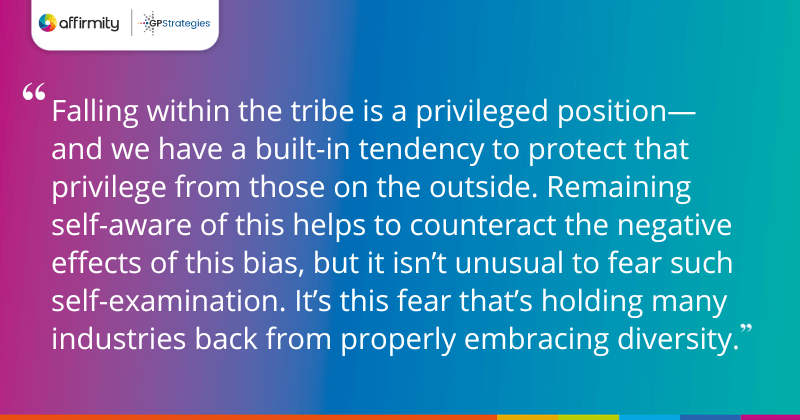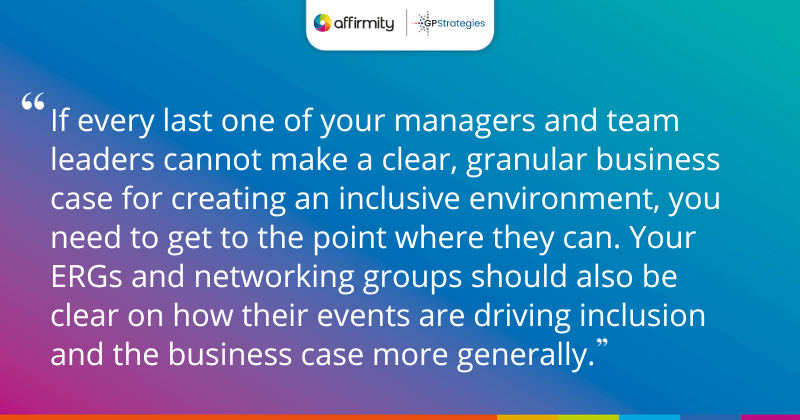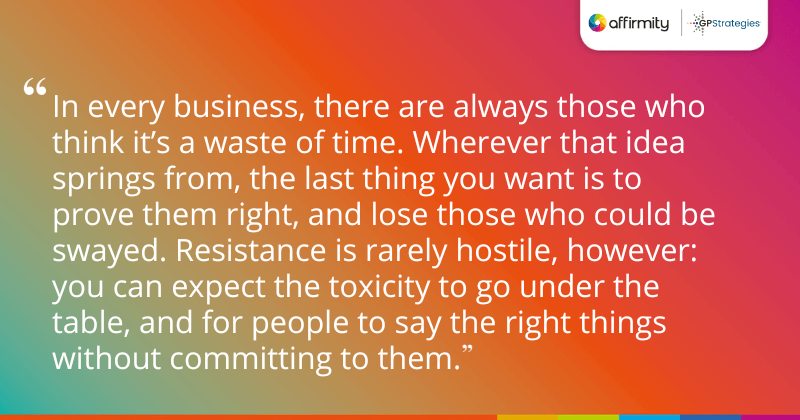Achieving diversity goals remains an uphill battle for organizations that have neglected inclusion. Discover how diversity insights, inclusion strategies, accountability, and good old-fashioned bravery are needed to affect lasting change.
In its report ‘Diversity Wins: How Inclusion Matters’, McKinsey noted that at the current rate of progress it would take 29 years for the average US company in their dataset to reach gender parity on their executive teams. Meanwhile, according to the Bureau for Labor Statistics, there continues to be a disparity between the median usual weekly earnings of Hispanic ($706) and Black ($735) employees versus their White ($945) and Asian colleagues ($1,174). The bureau notes that, among men, this disparity “holds for nearly all major occupational groups”.
Why are we still here? Arguably, it’s because creating a truly inclusive environment requires a level of commitment (and also process and practice change) that is missed in the pursuit of diversity alone. Your new intake won’t stick around if they encounter an unwelcoming environment. Furthermore, organizations are failing to measure progress despite being all too ready to be seen to spend big and commit to all kinds of great-on-paper initiatives.

An anecdotal example: we’re aware of an organization that spent over $500,000 on recruitment drives for diverse candidates. They went to underrepresented communities and commissioned specialist recruiters—so far, so good—and their first-year hiring statistics looked sound. But a year later, 50% of those new hires were gone. A further 25% loss followed the year after that.
LEARN MORE | ‘Inclusion Drives Diversity: Harnessing Inclusive Policies as an Engine for Organizational Change’
Tribal, Not Social
Humans are social creatures, or so the cliche goes. Sure, there’s some truth to that, but also plenty of pre-programed rules that undermine that tendency. We innately place the most value on those connections that we build and maintain as part of our “tribe”, whether that tribe is formed along gender, educational or socio-economic lines.
Falling within the tribe is a privileged position—and we have a built-in tendency to protect that privilege from those on the outside. Remaining self-aware of this helps to counteract the negative effects of this bias, but it isn’t unusual to fear such self-examination. It’s this fear that’s holding many industries back from properly embracing diversity.

Fear stops organizations from having courageous conversations that unravel entrenched thought. Even when a business gets that far, fear stops them working to embed change and subsequently measure it. The truly brave organizations are those that recognize this need to measure leaders against DE&I goals and identify those who drive inclusion forward as well as those who hold it back.
FROM OUR ARCHIVES | ‘Creating Accountability for Diversity: How Comerica Uses a Diversity Scorecard for Executives’
How Leading Organizations Fully Embrace Workplace Diversity
Measuring the DE&I activity and actions of your leaders is sometimes the biggest single step towards meeting the goals that you can take. You can only claim to have the solid foundations of an inclusive environment if your leaders are:
- Attending employee resource group (ERG) meetings
- Working with recruiters who can deliver candidates from a more diverse set of backgrounds
- Clear on the reasons they are putting one employee and not another forward for a project
- Demonstrating and developing their non-performative allyship
Integrate these behaviors into your performance management policies, holding your managers to account, and you have a winning combination.
If every last one of your managers and team leaders cannot make a clear, granular business case for creating an inclusive environment, you need to get to the point where they can. Your ERGs and networking groups should also be clear on how their events are driving inclusion and the business case more generally. One proactive way we’ve seen groups achieve this is by having everyone in the group bring someone from “the privileged group” along with them to events, spreading important messages further than just the group.

A wholesale embrace of workplace inclusivity sorts the wheat from the chaff when it comes to long-term success. Your organization needs to reach everyone with its training, as well as its policy and procedure changes. It’s important to also incorporate modes of training that exist in the flow of work, such as microlearning nudges that appear alongside as many of your processes as possible. The quicker you are at embracing all this, the quicker you will see growth in your diversity and retention numbers.
READ ABOUT ERGs | ‘Maximizing the Value of ERGs: Expert Answers to 7 Burning Questions’
It’s Time to Choose: Accountability or Failure?
Failing to commit to the process in this way usually results in organizations having nothing to show for their effort but a big bill and a pervasive sense of diversity fatigue. In every business, there are always those who think it’s a waste of time. Wherever that idea springs from, the last thing you want is to prove them right, and lose those who could be swayed. Resistance is rarely hostile, however: you can expect the toxicity to go under the table, and for people to say the right things without committing to them.
This is why accountability is so important. It feels good to spend on events, announcements, and communications nominally advancing the cause of DE&I. But unless you can actually check the progress you have made, measure it, and course-correct as you go, you risk not only wasting precious time and money, but the finite buy-in of your decision-makers. So make them accountable—they’ll thank you for it in the long run!
Are you building DE&I accountability and need a mechanism for checking progress within your organization? Contact us today.
 About the Author
About the Author
Angela Peacock is the Global Director of Diversity and Inclusion at GP Strategies. Through the work of hundreds of clients across 20 years of global DE&I experience, Angela has seen the good, the bad, and the downright idiotic: she pulls no punches and has learned that by having frank, strategic, and not just well-meaning conversations, organizations can drive better results and excel in terms of diversity, inclusion, and business performance.
